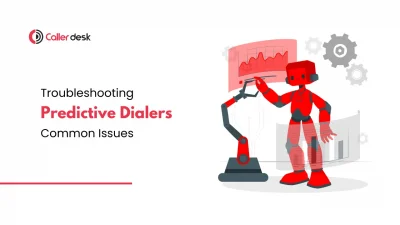Did you know that 70% of businesses are adopting softphones to streamline their communication? With the growing need for efficient and flexible communication solutions, softphones have become essential tools for business owners and IT professionals. Softphones, or Session Initiation Protocol (SIP) phones, allow voice calls over the internet using your computer or mobile device. In this blog, you will understand what softphones are, their key features, how they work, and why they are important for modern businesses.
What is a Softphone?
A softphone is a software application that enables users to make Voice over Internet Protocol (VoIP) calls using computers, cellphones, and tablets. Unlike traditional phones, softphones do not require dedicated hardware; instead, they use the device’s existing microphone, speaker, and internet connection to facilitate communication.
Key Features of Softphones
Softphones come packed with features designed to enhance communication and productivity for individuals and businesses alike:
- VoIP Technology
Softphones use the internet to enable voice communication, eliminating the need for traditional phone lines. - Device Compatibility
These applications work seamlessly across a range of devices, including PCs, laptops, tablets, and smartphones, ensuring flexibility for users. - Advanced Communication Tools
Beyond voice calls, softphones support features like:- Video calls for face-to-face interaction.
- Instant messaging for quick communication.
- Voicemail for missed calls.
- Call forwarding to redirect calls effortlessly.
- Business Integration
Softphones integrate smoothly with corporate tools like CRM software, helping businesses streamline workflows and offer personalized customer experiences.
How Do Softphones Work?
Softphones work by converting voice signals into digital data packets, which are then transmitted over the internet. Here’s a overview
- Installation
Download and install a softphone app on your preferred device. - Registration
Sign up with a VoIP service provider to receive a unique VoIP number, similar to a traditional phone number. - Configuration
Input the VoIP provider’s settings into your softphone app, including details like your VoIP number, password, and server information. - Making Calls
Open the softphone app and dial numbers using its interface, just as you would with a regular phone. - Data Transmission
When you speak, the softphone converts your voice into digital data packets. These packets are compressed and sent over the internet to the recipient. - Decompression and Reception
The recipient’s softphone decompresses the data packets back into voice signals, enabling clear and real-time communication.
Key Technologies Behind Softphones
1. SIP (Session Initiation Protocol)
This protocol manages the initiation, maintenance, and termination of voice and video calls, ensuring smooth communication sessions.
2. RTP (Real-Time Transport Protocol)
RTP guarantees that audio and video data are transmitted in real-time, preserving the quality and order of the data packets.
3. CODECs (Coder-Decoder)
CODECs compress voice data for efficient transmission and decompress it upon reception, reducing bandwidth usage while maintaining crystal-clear audio quality.
Why Softphones are Important for Businesses
1. Improved Communication
A sales team can use softphones to quickly switch between voice calls, video meetings, and messaging, enhancing collaboration. For instance, a real estate agency uses softphones to communicate seamlessly with clients and team members, improving response times and client satisfaction.
2. Increased Productivity
Features like call forwarding and voicemail help employees manage communications efficiently, ensuring important calls are never missed. For example, a customer service department can route calls to available agents, reducing wait times and improving service quality.
3. Cost Savings
By using the internet for calls, companies can eliminate the need for multiple phone lines, reducing monthly telecommunication bills. A startup might use softphones to save on initial setup costs, reinvesting those savings back into the business.
4. Remote Work Enablement
Remote employees can join team meetings, take client calls, and stay connected regardless of location. For example, a software development firm with a remote workforce uses softphones to maintain connectivity and collaboration across different regions.
5. Flexibility and Scalability
As a business grows, it can easily add more softphone users without significant costs. Employees can use softphones on various devices, ensuring seamless communication. For instance, a growing marketing agency can scale its communication system as it hires more staff, without the need for additional hardware.
Conclusion
Softphones are transforming the way we communicate, offering a flexible, cost-effective, and feature-rich alternative to traditional phone systems. Whether for personal use or business communication, understanding how softphones work and their benefits can help you make informed decisions about integrating them into your communication strategy.
Explore how CallerDesk can help you implement softphones tailored to your business requirements, ensuring seamless integration and optimal performance. Contact us today to learn more about how our expertise can benefit your business communication needs.





